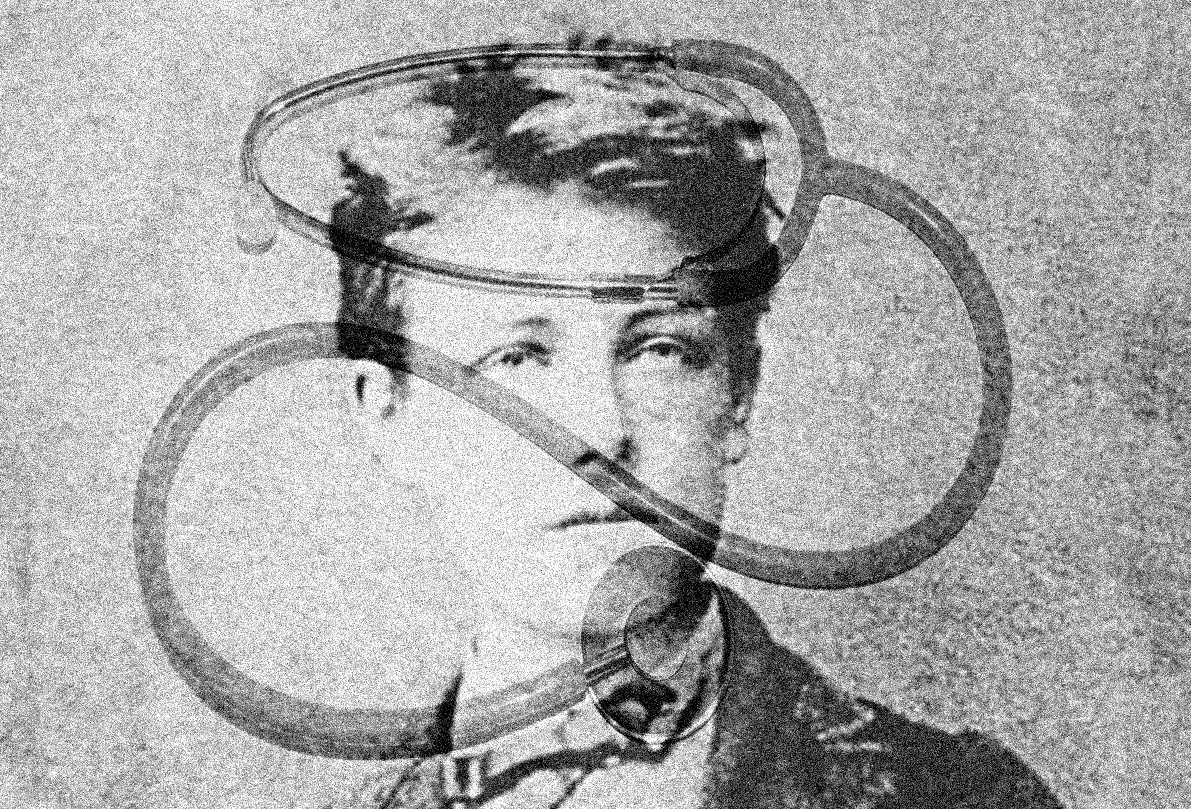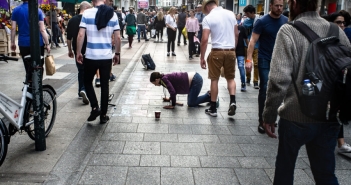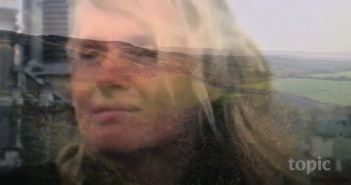Interstitial space: a space between structures or objects, i.e the contiguous fluid-filled space existing between the skin and body organs.
*******
It is difficult
to get the news from poems
yet men die miserably every day
for lack
of what is found there
from ‘Asphodel, That Greeny Flower’, by William Carlos Williams.
I – ‘It is probably a tumour’
It is 2:30 a.m. and the emergency room is at its busiest, crowded with nurses, rushing porters and patients. The doors to the ambulance bay swing open and a gurney emerges into their midsts. Lying on it is an old man, naked except for a green-paper hospital gown. His beard and matted grey hair make him an old testament prophet, the two paramedics pushing the trolley his head bowed acolytes.
I watch them as they pass. He lies prone, bone-thin and hollow-cheeked. His arms stretch and move in the air as if conducting some unseen orchestra, the sinews and ligaments of his limbs like bunches of reeds under his papery skin. As the little group moves by, he turns his head and vomits a dark brown liquid on the floor.
After he is triaged by a nurse I am directed to his cubicle to assess him. He is incapable pf answering my questions. The paramedics who brought him in tell me he was found by a neighbour, having collapsed on his kitchen floor.
No one can say how long he had been there. His mouth is dry, his pulse quick. I gently pinch the skin on his arm. As his body is dehydrated from the vomiting, the skin remains standing in folds. His abdomen is swollen and taut.
I lean in and listen with my stethoscope. If healthy his bowels will have a murmuring bass tone, like the burble of a theatre crowd waiting for a curtain to be raised. I hear nothing at first, and then a sound like water splashing on a metal surface, a high pitched tinkling. This sign, along with his other symptoms, indicate that something is obstructing his intestine.
I order intravenous fluid to be set up and walk him to the radiology department. An x-ray shows his lower intestine is grossly hyperinflated, its loops ridged like giant caterpillar pupae, the deep black of the air in the lumen overblown and the intestinal wall thinned out under the pressure.
There is something blocking his descending colon, some errant tissue the x-rays can’t penetrate, appearing asymmetric and bright white against the black of the air. It is probably a tumour. I call the surgeon to begin the preparation for the inevitable operation. He arrives in a flurry of white scrubs and begins his own assessment.
There is nothing to do now but rehydrate him and wait for a theatre to become free. I order more intravenous fluid to be set up, check on my other patients, and then walk to the doctor’s room for a short break.
II – The Interstitium
It is set away from the noise of the emergency room, down a long corridor lit by a blinking strip light. The room is empty at this hour but the low coffee table is full of the detritus of earlier shifts: paper cups half-filled with cold black coffee, pots of reheatable noodles, notepads, pens with their plastic cracked and teeth marks indented on their surface.
A television with its sound muted shows a slick-haired anchorman mouthing silently, the endless ticker tape of 24-hour news tracing its way across his tie. The room is windowless and unloved, a nothing space to be briefly passed through.
I lie down on the sofa and study the back of my hand, its dorsal surface, webbed by skin and hair. I imagine a microscopic view of the tissues: the cells inside which the organic chemical processes and genetic reproductions occur, the machinery of life.
And then I imagine the space between the cells, the interstitium, and the fluid slowly seeping into these spaces in the old man’s tissues out in the emergency room as the intravenous treatment has its effect.
III – ‘The Drunken Boat’
When doctors begin working in the emergency room they go through a kind of exposure therapy. No matter how long they’ve spent in medical school, witnessing for the first time the taboo of the sanctity of a person’s body being broken is a shock.
The first trauma case I experienced was a young man who was involved in a motorbike accident; his body crushed by the impact. My response was as anyone’s would be: a raised heart-rate, an out-of-body feeling, the running thought ‘is this real?’, ‘because this can’t be real’.
Through experience and repeated exposure this response lessened, to a point where now the shock has disappeared and these patients are now – for the first few acute minutes at least – simply a series of problems to be solved.
But the need to find meaning in these experiences is not something that wears off with time, nor is it something that is taught in medical schools. So where then to find it?
In the pocket of my scrubs there are crumpled post-it notes, a pocket light, chewing gum, and a thin book of Rimbaud’s poetry. I picked the volume from my bookshelf on the way to my night shift because of its size, slipping easily into the pocket of my scrubs.
I know nothing about the poet but I now have ten minutes before my break ends, and need some distraction. I turn the page to the only poem whose title I recognise ‘La Bateau Ivre’, ‘The Drunken Boat’, and begin to read:
As I was going down impassive rivers,
I no longer felt myself guided by haulers
The poem is spoken in the voice of the eponymous boat, unmoored and adrift on a strange sea. It travels drunkenly, moving through a cascading world of imagery, going wherever it pleases.
It has, as one critic put it, ‘the authority of thought to think itself through us’. Happy to be consumed by the poem for these short few minutes, I feel my consciousness awash with the poet’s vision, as if the walls of the anonymous room where I sit have become the banks of a swirling ocean.
Rimbaud was sixteen when he wrote the poem, and wandering the roads between Normandy and Paris; there is a juvenility to the wide eyed imagery of the poem. It feels like it was written as he walked, the dynamism of his youth pumping though his body.
I look at his photograph on the book cover. He is just a boy and, despite being in black and white, his eyes appear a translucent blue. He is an unformed space, yet to be filled with life, untethered and free to produce his hallucinogenic hymn to the energy of existence.
The boat moves across an ocean where anything is possible. It is this space, that Rimbaud calls the sea, that artists try to occupy. The areas outside the quotidian, the interstitia of life where art is created and where it has its effect. (Though I imagine these interstitia are as likely to be as easily accessed when daydreaming while doing the washing up, as they are while in some kind of self-enforced ‘artistic’ meditation).
After this rush of movement and crazed imagery however, the poem resolves itself back in the everyday. The boat, after travelling the broiling ocean, becomes a toy pushed around a puddle by a child.
IV – Recovery
The modernist poet William Carlos Williams held the conviction that poetry was ‘equipment for living, a necessary guide amid the bewilderments of life.’ Williams was perhaps a connoisseur of these bewilderments, practising as a family doctor and a professor of paediatrics throughout his life.
Emergency rooms are life multiplied and concentrated: full to the brim with the drama, noise and emotion of its extreme moments. It would seem the furthest place away from the contemplative spaces where art is created and regarded.
But as Rimbaud’s boat must return from the sea to the constraints of a puddle, so these interstitial spaces must communicate with real life. And as such art can have a practical use, which can be put to work, even in the noise of an emergency room in the middle of the night.
I close the book and prepare to return to work. It is 2:50 a.m., another five hours to go before the end of the shift.
Something has changed in the short break I have had. The reading of the poem has made my body feel skittish, as if adrenaline has been released into my system. Somewhere cogs move and blocks fall into place.
When trying to assess if someone has had a heart attack I will ask them what kind of pain they have experienced. Was it sharp? blunt? heavy? stabbing?
Patients find it difficult to describe a feeling that deep and visceral. The brain is finely-honed to locate exactly a superficial sensation on the body’s surface, but is often unable to give words to a feeling that profound.
Patients will instead often fold a hand into a fist and press it against their chest to indicate what they mean. The effect of the poem is similar: some altering in the relationship between the self and the world, a communication between the interstitium and the cell, that takes place in the depths, impossible to locate precisely or accurately describe.
I return to the emergency room and check first on the old man. The intravenous bag flowing into the vein in his arm is nearly empty. A little colour has returned to his cheeks and he appears less hollowed out.
The sodium chloride has rehydrated him, filling his interstitium. These spaces, the spaces between cells, though empty, do have a function. They give the tissues of the body their tensile strength. They are the scaffolding on which life sits. Without them we would not be able to combat gravity, to walk upright, to reach high.
The old man grabs the sides of the gurney as I approach. He pulls himself up to sit.




